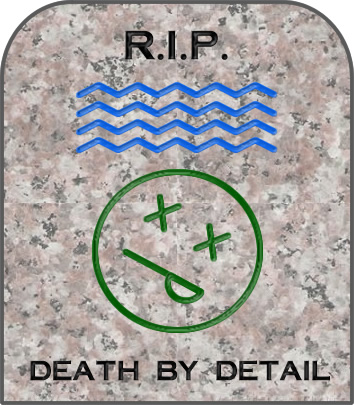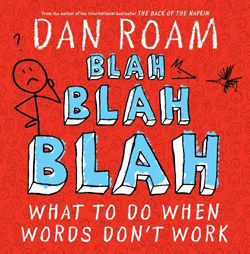 One of the perils of the modern age is something that visual thinking expert and author Dan Roam calls “death by detail” in his new book, Blah, Blah, Blah: What to Do When Words Don’t Work.
One of the perils of the modern age is something that visual thinking expert and author Dan Roam calls “death by detail” in his new book, Blah, Blah, Blah: What to Do When Words Don’t Work.
What does that mean? We tend to over-rely on words – spoken and written – in our business communications, which tend to overwhelm us and underinform us at the same time.
Evidence of death by detail is all around us:
- CEO speeches that are dominated by corporate-speak – lots of words, but very little meaning.
- PowerPoint decks that bore us to tears with too many bullets, too many words – and presenters who insist on reading off of their slides.
- The endless torrent of business books coming at us that even professional reviewers don’t have time to read any more. To make matters worse, many of these books are content to just put a fresh veneer on existing concepts. Once again, a lot of words, but very little original thinking and information we can actually use.
- Bloated corporate reports that contain too much useless detail and not enough of the information we really need to do our jobs. This is made worse by the fact that many businesspeople are only fair to poor writers. They don’t know what’s important, so they dump in everything.
- Millions of websites, many of which contain information of questionable accuracy – or which represent opinions, not facts. For the average person, it’s actually hard to tell the two apart.
- Companies are awash in ideas, but don’t have a reliable process to separate the handful of potentially valuable ones from the ginormous pile of bad ones.
We have met the enemy – and he is us
According to Roam, we have become unintentional victims of the Information Age:
“None of us set out intending to make good ideas hard to find. Nobody decided up front that the best way to say one thing was to say everything. Nobody began a career believing that the best way to get ahead is by making sure they’re not understood.
“With all of the channels of instant communication available to us, we should understand each other better, not worse. With so much history accessible with the tap of a finger, we should find faster ways to solve problems, not quicker ways to assign blame. When we have a great idea, we should be able to share it more clearly than ever, not find it harder than ever to be heard.”
We don’t need more words. We need more ideas. We need them fast, and we need them to be good – and to know that they’re good, we need them to be clear.”
 That last sentence is the manifesto of the book: Clarity comes from well-thought out pictures and images, not words alone. Pictures help us to think, and they help us to communicate more effectively.
That last sentence is the manifesto of the book: Clarity comes from well-thought out pictures and images, not words alone. Pictures help us to think, and they help us to communicate more effectively.
Blah, Blah, Blah is all about creating a methodology for thinking things through, and then breaking through the clutter – the “noise” we just described – in order to communicate our ideas impactfully, so we can gain the attention of the people we need to influence.
Despite the odd book title (which, ironically, Roam probably chose because it would get attention), Blah, Blah, Blah looks like another winner from Dan Roam. I’m just starting to dig into this book, which is liberally illustrated with Roam’s simple, clear drawings. If you don’t recognize his name, Roam is the author of the best-selling The Back of the Napkin: Solving Problems and Selling Ideas with Pictures.
Who is this book for?
If your job involves developing ideas and sharing them with others (I think that describes most of us reading this blog!), then I recommend you invest in this important book.

Leave a Reply